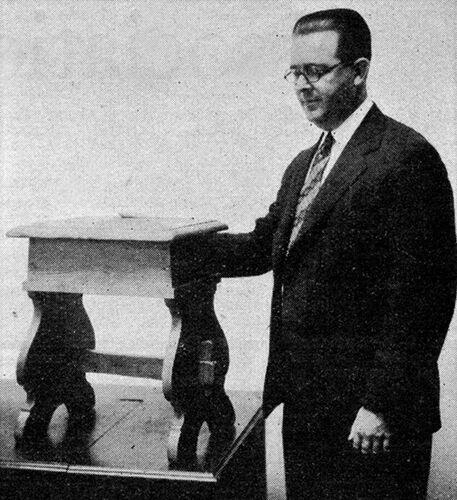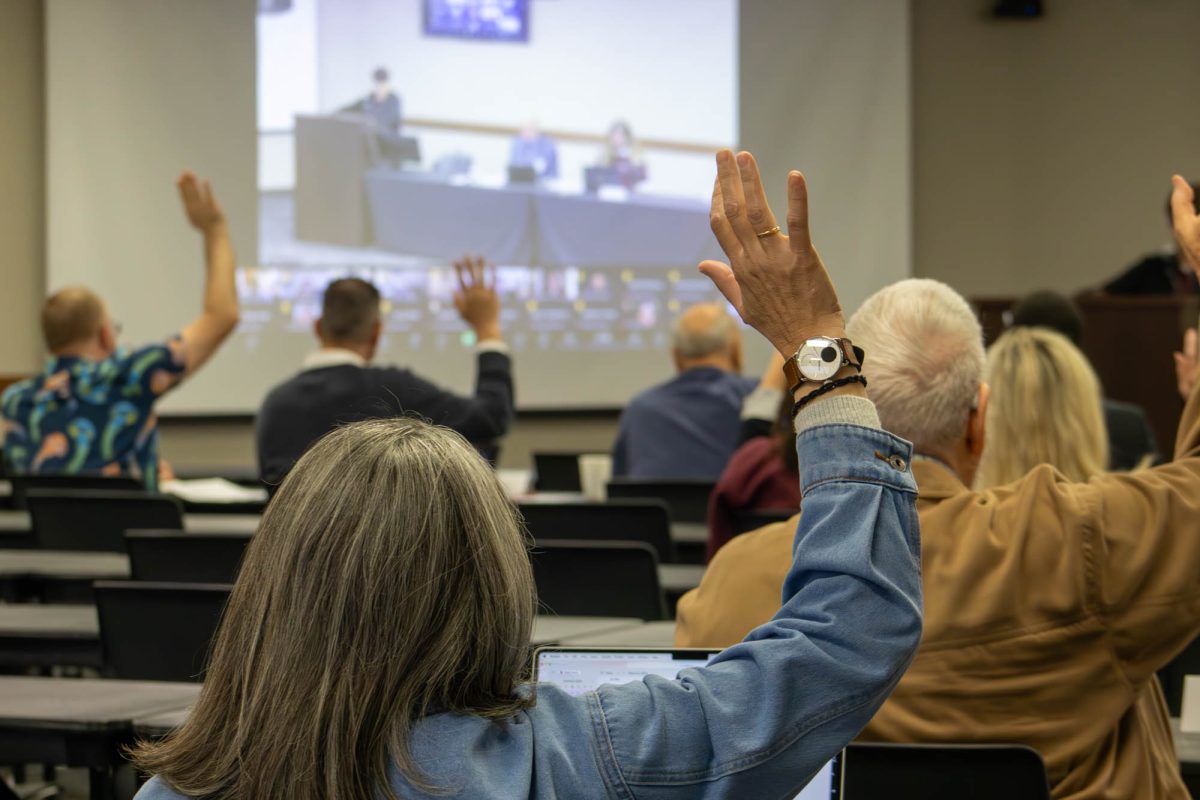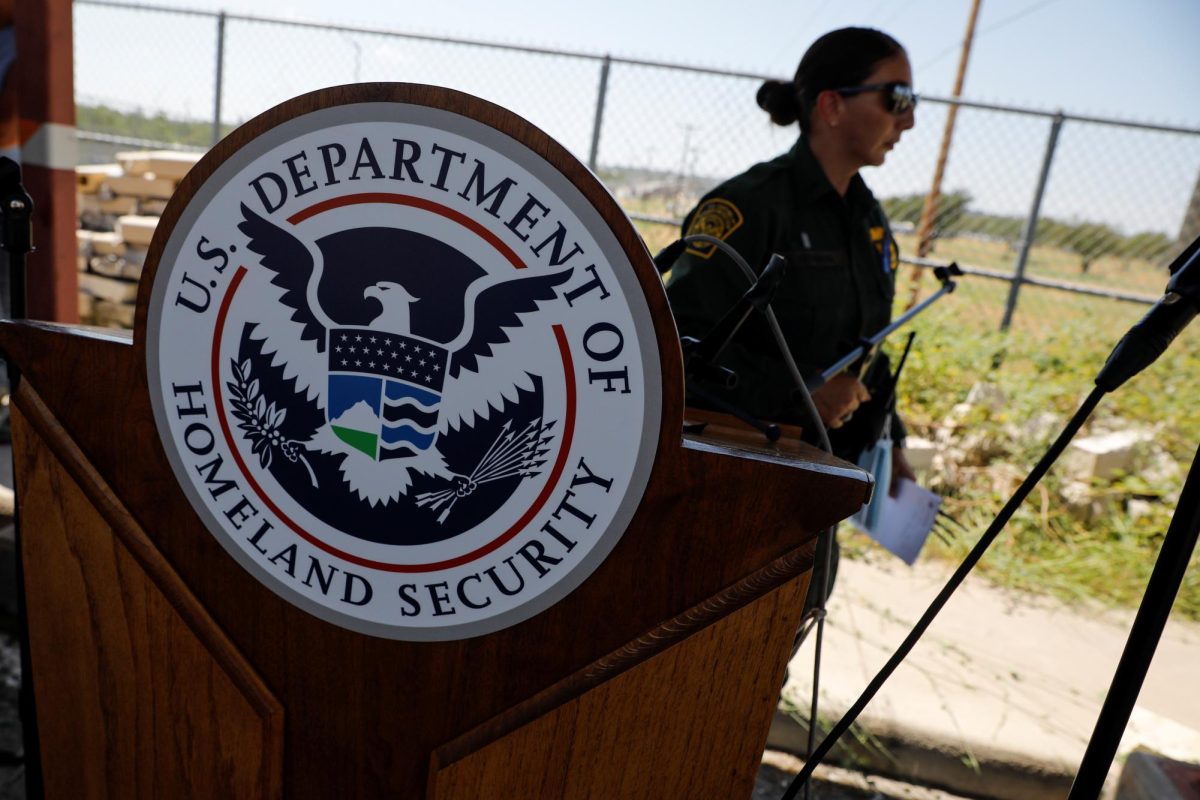In the back of Texas A&M’s forestry services building, 20 minutes off of the main campus, there is a wooden box in a storage closet. Beneath its unassuming appearance lies a tale of American history, Texas legends and Aggie family.
The box, a humidor, a container to keep cigars moist, was recently donated to A&M by Henry Kirby “H.K.” and Roberta “Robbie” Pitts. Associate Director of Forest Resource Development Bill Oates said the humidor’s historical significance lies in its origin.
“Back about 100 or so years before, I think it was in the Coolidge administration, they started remodeling the White House to remove some of the material that was installed after everything was burned [in the War of 1812],” Oates said. “They made various items out of the material that came out of the White House. They would give them away to people as gifts.”
According to clippings of the Baltimore Sun provided by Oates, two humidors were originally built out of the White House roof materials, in addition to some other souvenirs.
“A large part of the removed timber was purchased by the National Lumber Manufacturers’ Association, which has presented some of the rough to various eager recipients,” the Baltimore Sun reported in 1929. “A few of these presents of historical material were made.”
The humidor at A&M, Oates said, may be one of the last surviving samples of the former White House.
“There might still be stuff still out there, but people may not even know what it is,” Oates said. “If you didn’t have a plate on it, like a metal plate on it that describes it, if it didn’t have that, people wouldn’t even know where it came from.”
At 91 years old, H.K. has led a storied life, including being a public school teacher, an adjunct professor of history at A&M Kingsville and the inventor of the University of Texas’ ‘hook ‘em horns’ sign. H.K. said the humidor fell into his possession via family connection.
“I got it from my aunt when she passed in the late [19]60s,” H.K. said. “It originally belonged to Cousin John Henry.”
John Henry Kirby, or Cousin John Henry, as he liked to be called, was a Texas oil and lumber tycoon known as “The Father of Industrial Texas.” Kirby was the recipient of one of the two humidors built out of the White House roof from the National Lumber Manufacturers’ Association. H.K. said Kirby employed his parents and his grandfather and took a special interest in his aunt Maurine Knox.
“My aunt had — bless her heart — she had polio when she was about 19,” H.K said. “It froze her face into a contorted shape. I think that’s one reason Cousin John Henry worked so hard and did so much for her. He kind of felt sorry for her having polio which crippled her.”
Though Kirby never graduated college, H.K. said he was an advocate of higher education and a supporter of A&M.
“He was a big proponent of education and he admired Texas A&M,” H.K. said. “He was looking to provide a continuing thing rather than give a lump sum, so he gave A&M a big tract of his land.”
The land, now known as the John Henry Kirby Memorial Forest, Oates said, was donated to A&M with the stipulation that the revenues from the forest be used to fund scholarships.
“So far, during the time we’ve managed the forest, it’s generated more than half a million dollars,” Oates said.
When Kirby died in 1940, H.K. said, his daughter was bequeathed many of his possessions, including the humidor, to Knox, who subsequently gave the humidor to H.K. upon her passing.
“I just knew we had it in the house,” Robbie said, “I always thought it was such a neat piece.”
Though a University of Texas alum, H.K. said he donated the humidor to A&M because of its historical connection to Kirby.
“I knew of [A&M’s] association with Kirby,” H.K. said. “I said, since the Aggies take care of that stuff, we should give it to them so it can be shown to the masses. Right now, they’re talking about taking it to [the Bullock Texas State History Museum] in Austin.”









